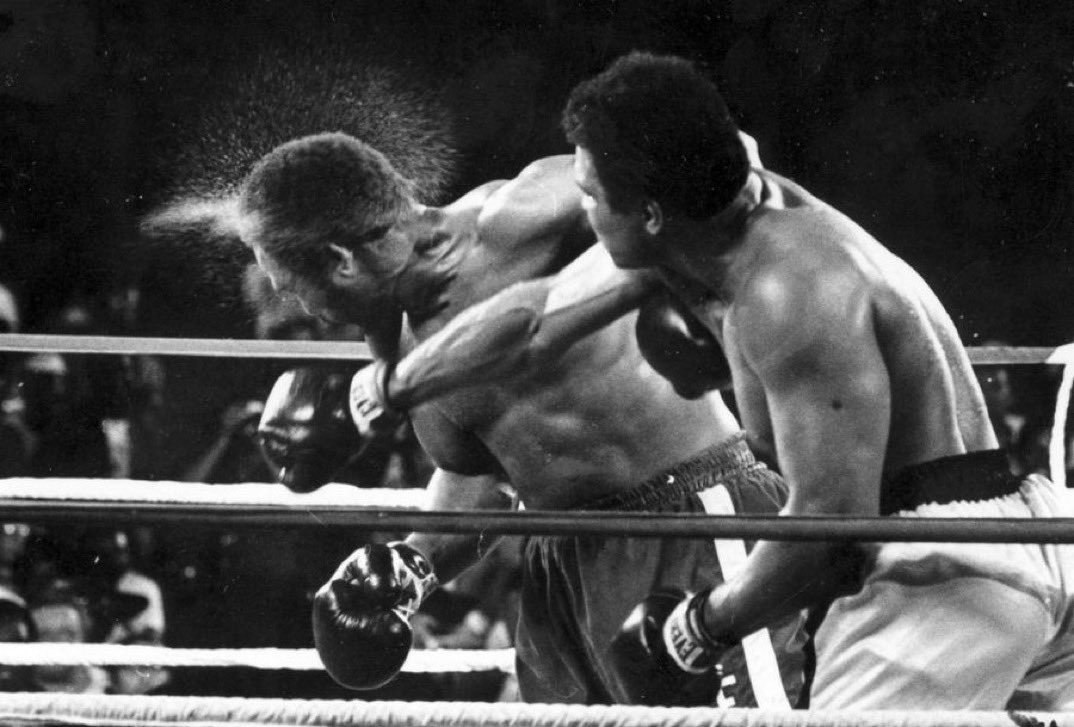The rope-a-dope is a boxing combat technique in which one potential candidate draws non-injuring offensive punches (while leaning against the boxing ring rope) to tire out the opponent. This allows the former to conduct deadly offensive manoeuvres to help them win. The rope-a-dope was most famously connected with Muhammad Ali in his October 1974 Rumble in the Jungle match in Kinshasa, Zaire, versus world heavyweight champion George Foreman.
Also read: Rumble in the Jungle: The iconic Muhammad Ali vs George Foreman fight
Style origin
A boxer performs the rope-a-dope by assuming a protective position (in Ali’s classic pose, pretending to be imprisoned and lying against the ropes, allowing some of the punch’s force to be absorbed by the ropes’ elasticity rather than the boxer’s body).
The fighter maintains their defence and prepares for incoming blows while looking for opportunities to counterpunch their opponent, who may have left himself vulnerable to counters by mounting an offence.
The boxer reduces their chances of being caught with a clean flush blow by taking a defensive stance and being prepared for the incoming blows, as ideally a substantial portion of the punches will land on the boxer’s hands and arms, or will miss altogether due to the boxer slipping the punch.
Also read: George Foreman: Top 5 heavyweight boxing matches
Furthermore, if the opponent lacks stamina, their power will drop throughout the battle as they lose energy, resulting in many strikes against the boxer’s guard being “wasted.”
However, a fighter using this strategy must have a strong chin, or the ability to withstand punishment, in order to withstand the punches that do get through the boxer’s defences and land.
Offensively, the boxer using this approach will try to capitalise on errors in their opponent’s strike by countering if the opponent has left himself or herself vulnerable.
They will also try to launch short bursts of offensive attacks in between their opponent’s attacks, making sure to rapidly return to their defensive posture to avoid being counterattacked.
Also read: George Foreman to Mike Tyson: List of 5 greatest heavyweight boxers of all time
The boxer does not have to be against the ropes to rope-a-dope the opponent, despite the term.
Name origin
According to photographer George Kalinsky, Ali had an odd sparring style in which he had his sparring partner hit him, which he felt “was his way of being able to take punishment in the belly.” “Do what you do in a training session: Act like a dope on the ropes,” Kalinsky instructed. “So, you want me to be a rope-a-dope?” Ali responded.
Kalinsky, according to Angelo Dundee, advised Ali: “Why don’t you try something like that? Sort of a dope on the ropes, letting Foreman swing away but, like in the picture, hit nothing but air.” The expression “rope-a-dope” was popularised by publicist John Condon.







